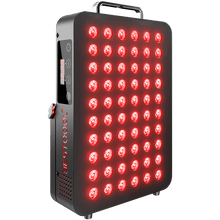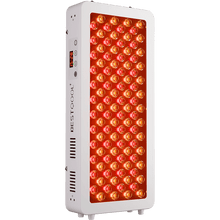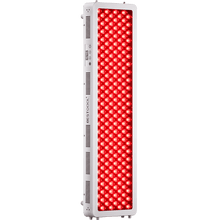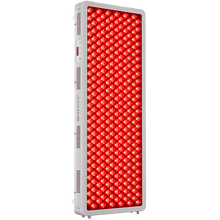The liver is the largest internal organ in the human body, with multiple metabolic functions. As the liver is involved in detoxification, hormone regulation, sugar and fat metabolism, and digestion and excretion, it is an indispensable organ for maintaining optimum health. With the acceleration of people's pace of life, the yearly incidence of liver disease has increased. In daily life, we often have a lot of behaviors that hurt the liver, resulting in liver damage, such as fatty liver. The top three causes of fatty liver disease are obesity, diabetes, and alcohol abuse.
What is fatty liver?
Fatty liver is now the second most common liver disease after viral hepatitis (hepatitis B, etc.), and almost 1 in 3 people may have fatty liver. Fatty liver is commonly known as fat deposition in the liver and can be diagnosed when the fat content of liver tissue exceeds 5% of the net weight of the liver. There is currently a lack of adequate clinical treatments for fatty liver, which mainly focus on lifestyle adjustment and drug treatment. Fatty liver disease is broadly divided into two types:
Non-alcoholic fatty liver disease (NAFLD): 80-90% of fatty liver patients do not drink alcohol but get this disease due to obesity, high blood pressure, lipids, and sugar.
Alcoholic fatty liver disease: Long-term alcohol consumption and short-term heavy alcohol consumption (>80 g alcohol/day) cause severe liver damage.
What are the dangers of fatty liver?
Although fatty liver is a reversible process in the early stage, it may also develop into cirrhosis or liver cancer if left unchecked, and the harm caused by fatty liver is not limited to the liver itself.
- Causes other liver diseases: As the disease progresses, it can lead to liver fibrosis, liver cirrhosis, and hepatocellular carcinoma. Relevant statistics show that the incidence of liver cirrhosis in patients with fatty liver is as high as 25% within ten years of illness.
- Increased risk of metabolic diseases: Due to the liver's central role in glucose and lipid metabolism, fatty liver may also increase the risk of type 2 diabetes, cardiovascular disease, chronic kidney disease, osteoporosis, and other diseases.
If you don't want to get sick, you must first protect your liver. Some people think that liver nourishment = supplement; therefore, they do not hesitate to spend a lot of money buying expensive tonics. However, nourishing liver functions does not necessarily require many supplements, and improper liver detoxifying methods can even increase the burden on the liver. Today, I introduce you to red light therapy, a safe and non-invasive modern way to boost liver functions.
How does red light therapy improve liver health?
RLT device is a therapeutic application of visible light energy to fight disease, repair damage, relieve pain, manage organ and immune system dysfunction, reduce inflammation, and address various neurological and age-related health issues. Red light is rich in a large amount of visible light (red and near-infrared), which can be absorbed by the human body and converted into cellular energy. This photobiological response stimulates growth, provides energy for cellular respiration, and stimulates DNA repair.
Unlike sunlight, which contains a mixture of beneficial, neutral, and harmful (short-wave ultraviolet rays) wavelengths, red light therapy has only safe and beneficial wavelengths, which are selectively applied to the affected organs and tissues. Red light therapy's biological effects can impact liver health more than just improving its functions, as it has both photochemical and thermal rays with a strong penetration capacity. Red light therapy may benefit overall liver health and diseases like fatty liver in the following ways.
Liver cell regeneration
The liver is also one of the few organs that can repair itself and naturally renew lost tissues. A whole liver can be generated as long as there is 1/4 normal liver tissue. When acute injury or partial resection occurs, it can exert a strong regenerative ability to complete the recovery of function and cell number in a short time. However, in chronic liver conditions such as fatty liver diseases, especially in the stages of fibrosis and cirrhosis, the regeneration ability of the liver is inhibited, leading to its failure. Studies have shown that "red light therapy increases the proliferation of mesenchymal stem cells and tissue regeneration ability." Stem cells are a type of cell with self-renewal ability, and stem cell therapy has shown fantastic potential in intervening in liver diseases. Shining red light on the body can stimulate cellular processes by enhancing mitochondrial function, positively affecting hepatic stem cells' regeneration capacity and behavior.
Reduce inflammation
Red light therapy is well-known to have several anti-inflammatory roles in the body by enhancing anti-oxidant defense mechanisms. Excessive production of reactive oxygen species (ROS) weakens the immune system and contributes to chronic inflammation. Studies have demonstrated that "liver cirrhosis treatment with low-level laser therapy in the animal model significantly reduced the liver inflammatory enzymes and exerted beneficial effects on the liver structure and function.
Improve liver metabolism
Red light therapy has reportedly shrunk fat cells in adipose tissue by releasing triglycerides. Fatty liver is a common complication that arises due to abnormal fat metabolism. A clinical trial conducted on non-alcoholic fatty liver disease (NAFLD) older adults on the red combination of red light therapy and Mediterranean diet (MD) showed "significant reduction in the serum lipid profiles, liver enzymes, BMI and waist sizes compared to the group which follows MD only." Similar studies reported that "red light therapy improved hepatic lipid metabolism and inhibited obesity and type 2 diabetes in the liver of high-fat diet (HFD)-induced mice."
Bottom Line
In a nutshell, red light therapy has the power to resolve liver problems and lower disease risk factors such as obesity, high blood pressure, etc. It's important to mention that the effectiveness of red light therapy devices in improving liver health may vary depending on the specific condition, the stage of inflammation, and individual factors. While some studies suggest positive effects, more research is needed to establish standardized protocols and better understand the optimal parameters for different applications.
References and Citations
[1] Devrbhavi H, Asrani SK, Arab JP, Narteey YA, Pose E, Kamath PS. Global burden of liver disease: 2023 update. J Hepatol. 2023 Aug;79(2):516-537.
[2] Fekrazad R, Asefi S, Alahdadi M, Kalhori KA. Effect of Photobiomodulation on Mesenchymal Stem Cells. Photomed Laser Surg. 2016 Nov;34(11):533-542.
[3] Oliveira-Junior MC, Monteiro AS, Leal-Junior EC, Munin E, Osório RA, Ribeiro W, Vieira RP. Low-level laser therapy ameliorates CCl4-induced liver cirrhosis in rats. Photochem Photobiol. 2013 Jan-Feb;89(1):173-8.
[4] Nagyy EN, Ibrahim FM, Jouda AAA, Elsayed MM. The Effect of Laser Therapy Along With MD Versus MD Only on Older Adults With Non-alcoholic Fatty Liver Disease Randomized Clinical Trial. J Lasers Med Sci. 2021 Jul 24;12:e39.
[5] Guo S, Gong L, Shen Q, Xing D. PBMT reduces hepatic lipogenesis and enhances insulin sensitivity through activation of the CaMKKβ/AMPK signaling pathway. J Photochem Photobiol B. 2020 Dec;213:112075.













 Small
Small

 Moderate
Moderate

 Moderate
Moderate

 Moderate
Moderate

 Full
Full



